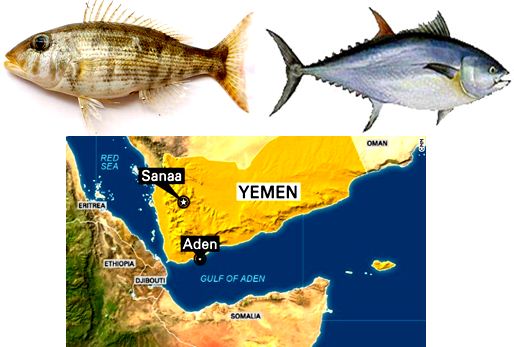ANALYTICAL ENVIRONMENTAL STUDY ON THE POLLUTION EFFECT OF HEAVY METALS IN SOME TYPES OF THE FISH IN YEMEN
Keywords:
Fish samples, heavy metals, Yemeni coasts, seawaterAbstract
Objectives: The fish samples were collected from the three different cities of Yemeni coasts. Aden, Al-Hodeidah and AL-Mukalla were chosen for the sample collection. Lethrinusmahsena, Thunnustonggol, Sphyraenajello and Epinephelusareolatus fish samples were considered for the study as they are more common eatable fish among the population.
Methods: The study was carried out in the all three seasons of winter 2011, summer 2012 and winter 2013 in order to check seasonal variation of heavy metal pollution.Total Fish (108 samples of each muscles, liver and gills) were analyzed. The four heavy metals lead, Cadmium, Mercury and arsenic which are considered highly toxic were detected in the samples in the year 2010, 2012 and 2013.
Results: The mean concentration of Pb, Cd, Hg and as in muscle was 0.101±0.012, 0.046±0.010, 0.058±0.002 and 0.089±0.002µg.g-1 dry wt. respectively; whereas in liver was 0.196±0.033, 0.132±0.020, 0.102±0.007 and 0.115±0.0005µg.g-1 dry wt. respectively; whereas in gill was 0.294±0.042, 0.196±0.063, 0.016±0.0006 and 0.034±0.0005µg.g-1 dry wt. respectively. The results showed that, the heavy metals concentrations were high in stations AL-Hudaydah and AL-Mukalla and low in station of Aden. Also the heavy metals concentrations were high in Seasons summer and low in Seasons winter.
Conclusion: From the heavy metal concentrations mentioned above we can see that somewhere the concentration is crossing the limits as permissible by the World Health Organization. It suggests a high risk to the health of human being on the consumption of contaminated fish. Therefore it is recommended that the practice of trace element detection should be continued in order to update whether the heavy metal concentration is above or below the permissible limits and if it is above the limit then precautions must be taken to avoid possible consumption of contaminated eatables.
Peer Review History:
Received 6 October 2017; Revised 11 November; Accepted 30 December, Available online 15 January 2018
Academic Editor:
Dr. A.A. Mgbahurike , University of Port Harcourt, Nigeria, amaka_mgbahurike@yahoo.com
, University of Port Harcourt, Nigeria, amaka_mgbahurike@yahoo.com
Reviewer(s) detail:
Islamudin Ahmad , Mulawarman University, Samarinda, Indonesia, islamudinahmad@yahoo.com
, Mulawarman University, Samarinda, Indonesia, islamudinahmad@yahoo.com
Dr. Kingsley C Anukam , University of Benin, Nigeria, kanukam@gmail.com
, University of Benin, Nigeria, kanukam@gmail.com
Downloads

Published
How to Cite
Issue
Section

This work is licensed under a Creative Commons Attribution-NonCommercial 4.0 International License.










 .
.